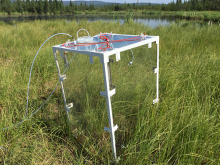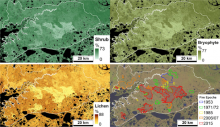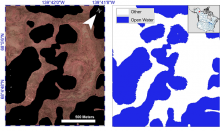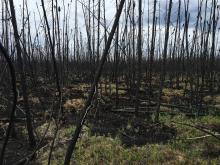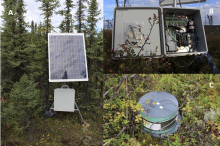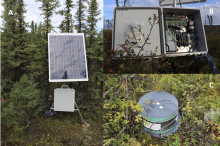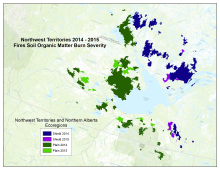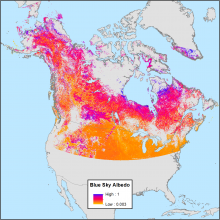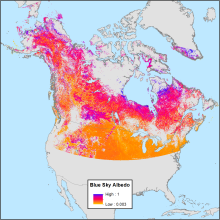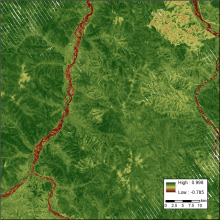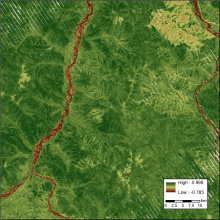One kilometer resolution, cloud-free snow cover extent and snow depth data are available for Alaska from 2001 to 2017.
High Res/Cloud-Free Snow Cover Extent and Depth
Downscaled MERRA-2 snow depth (in meters) data. Images show snow depth for two time periods: spring snow melt for 23-30 April, 2007 (left) and during early snow accumulation for 30 September-7 October, 2007 (right).


